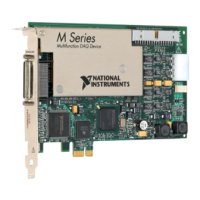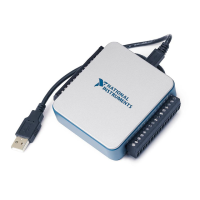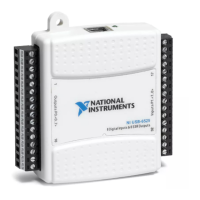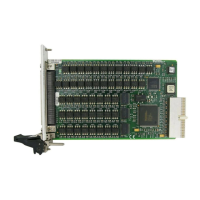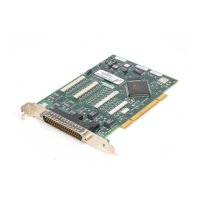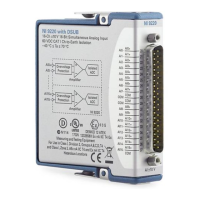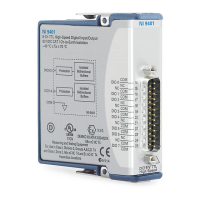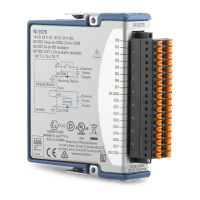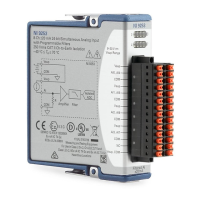© National Instruments | 8-5
M Series User Manual
Refer to the KnowledgeBase document, Digital Filtering with M Series and CompactDAQ,
for more information about digital filters and counters. To access this KnowledgeBase, go to
ni.com/info and enter the Info Code rddfms.
I/O Protection
Each DIO and PFI signal is protected against overvoltage, undervoltage, and overcurrent
conditions as well as ESD events. However, you should avoid these fault conditions by
following these guidelines:
• If you configure a PFI or DIO line as an output, do not connect it to any external signal
source, ground, or power supply.
• If you configure a PFI or DIO line as an output, understand the current requirements of the
load connected to these signals. Do not exceed the specified current output limits of the
DAQ device. NI has several signal conditioning solutions for digital applications requiring
high current drive.
• If you configure a PFI or DIO line as an input, do not drive the line with voltages outside
of its normal operating range. The PFI or DIO lines have a smaller operating range than the
AI signals.
• Treat the DAQ device as you would treat any static sensitive device. Always properly
ground yourself and the equipment when handling the DAQ device or connecting to it.
Programmable Power-Up States
At system startup and reset, the hardware sets all PFI and DIO lines to high-impedance inputs
by default. The DAQ device does not drive the signal high or low. Each line has a weak
pull-down resistor connected to it, as described in the specifications document for your device.
NI-DAQmx supports programmable power-up states for PFI and DIO lines. Software can
program any value at power up to the P0, P1, or P2 lines. The PFI and DIO lines can be set as:
• A high-impedance input with a weak pull-down resistor (default)
• An output driving a 0
• An output driving a 1
Refer to the NI-DAQmx Help or the LabVIEW Help for more information about setting power-up
states in NI-DAQmx or MAX.
Note When using your M Series device to control an SCXI chassis, DIO lines 0, 1,
2, and 4 are used as communication lines and must be left to power-up in the default
high-impedance state to avoid potential damage to these signals.
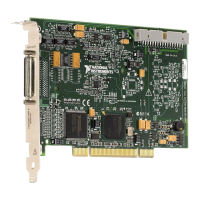
